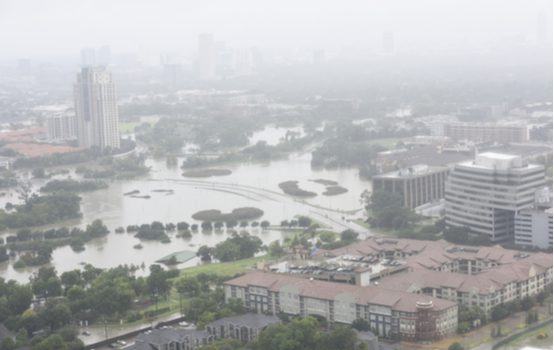Don’t Blame Lack of Zoning Laws for Houston Floods

The rain in Houston has barely stopped and the flood waters have yet to fully recede, but already a narrative has been created in the media, led by ProPublica, but with a lot of people and publications playing follow the leader, that blame the severity of Harvey’s impact on the region squarely on the city’s lack of zoning codes.
Unfortunately, it’s nonsense.
First things first: Hurricane Harvey dumped a record amount of rain on Houston. According to the Los Angeles Times, the region received more rain in a few days than they normally get in a year. One of the meteorologists the Times interviewed said that it was over a trillion gallons of water and that the amount was unprecedented for the continental United States.
According to NOAA, only a handful of cities get more rain in a year than Harvey brought to Houston. No one could have planned for this devastation because no one ever anticipated it being a possibility. No storm drainage system in the country is built to handle that much rainfall in that little time.
As far as Houston’s lack of zoning goes, it’s a myth. Stephen Smith pointed out nine years ago that Houston’s lack of normal land-use zoning has not prevented the city government from mandating minimum-parking requirements, setbacks, minimum lot sizes and all the other thousand ills that flesh is heir to. More than that, the main difference in the built environment of Houston and other cities that have experienced the bulk of their growth in the automobile era (one is tempted to write Anthropocene) is that infill development is much easier.
Houston, Dallas, San Antonio, Los Angeles, Phoenix, Jacksonville, and Tulsa all have downtowns with modern glass towers, acres of surface parking, subdivision after subdivision of single family detached residential on a hierarchy of streets feeding into a network of freeways.
Publications like ProPublica, Quartz, and Newsweek also have argued that zoning would have required developers to leave more of any given lot’s area as unpaved, preserving the wetlands and prairie that absorb water. But as Charles Marohn of Strong Towns pointed out, the wetlands that were filled could have accommodated 0.02 to 0.1 percent of the rain Harvey brought.
Another fact that ProPublica’s narrative missed: Other cities, in addition to having zoning, have faced extreme flooding events from much less rain than Houston received this month. According to the Las Vegas Review Journal, for example, severe flash floods result from as little as two inches of rain in 25 minutes and enormous storm drains have been built under the city to cope. How big are they? Big enough that around 1,000 people live in them. Hurricane Sandy caused major flooding in New York and New Jersey with just seven inches of rain, according to NASA.
Moreover, according to the Center for Neighborhood Technology, 92 percent of urban flooding takes place outside of designated floodplains, so restricting development within the floodplain is not effective. Flooding in cities around the country may not be as severe as that caused by Harvey, but urban flooding is still a national problem. Between 2007 and 2011, flooding in Cook County, Illinois, caused about $773 million in damage.
The relationship between impervious surface area and flooding seems to be very close, although the CNT found ambiguous evidence on this point. Only 10 of the 23 Cook County zip codes with the most flood insurance claims were also where the most impervious surface was. This is probably because they, like the people blaming building regulations for flooding, have got the short end of the stick: As two-thirds of the surface area in the typical American city is devoted to parking and roadway.
According to Charlie Gardner, around 20 percent of Downtown Houston is surface parking, while another 40 percent is devoted to streets—while in a typical city built before the 19th century, only about 15 percent of land would be devoted to roadway. This huge amount of urban land given over to asphalt dwarfs the amount of space available for housing and parks. Writing at Planetizen, Todd Litman calculates that as much as 4,000 square feet of land per automobile is given over to roadway and parking—that’s a lot of land consuming taxes instead of producing them. For comparison, according to Michael Lewyn, until 1998 the minimum lot size in Houston for a new home was 5,000 square feet. This is important because standard planning practices are based around retaining storm water on site, meaning that buildings need large green space foot prints to absorb water, but if the effect of such regulation is to separate buildings, then they could lead to more driving and hence more asphalt.
Even then, geography matters: According to economist Phil Magness, some of the worst flooding, in terms of water volume, occurred in the rural areas along the Brazos River.
What lessons can we learn from Harvey? Geography and geology are important to how cities handle severe storms and sea level rise. More importantly, cities do not need historic storms to suffer from flooding and the 60 percent of a city’s surface area devoted to parking and roadway likely exacerbate flooding more than residential or commercial development. Compact, walkable cities of the types advocated by New Urbanists should be better able to deal with urban flooding.
Matthew M. Robare is a freelance journalist based in Boston.
This article was supported by a grant from the Richard H. Driehaus Foundation.
Comments